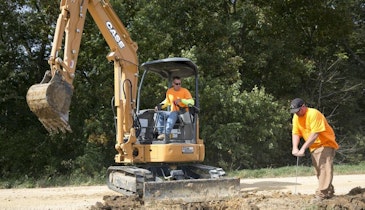Interested in Onsite Systems?
Get Onsite Systems articles, news and videos right in your inbox! Sign up now.
Onsite Systems + Get AlertsI want to share the information I have received in response to the February Septic System Answer Man column in Pumper. That column responded to a question about the deterioration of the second chamber in a compartmented septic tank.
A number of issues were brought out by readers. They are the proper construction of concrete septic tanks, the function of a scum layer to keep the hydrogen sulfide gas away from the concrete, and the ventilation of compartmented septic tanks. I am going to share the various viewpoints about septic tank deterioration. Perhaps some conclusions can be reached about the cause or causes of septic tank deterioration. Other readers may want to report their observations as well.
ACID WOES
Hydrogen sulfide is a gas generated by the action of anaerobic bacteria. It is slightly heavier than air. When hydrogen sulfide (H2S) gas mixes with water vapor, a weak solution of sulfuric acid is formed (H2SO4). This sulfuric acid is what breaks down concrete that has not been made properly and therefore sulfate-resistant.
I will say that properly made and properly cured concrete septic tanks are an excellent product for onsite sewage treatment systems. However, the comments I received point out that concrete tanks in some areas are having deterioration problems. These comments were sent to me by onsite sewage treatment professionals.
My friend Bill Mellen Jr. of Illinois, from whom I learned about drop box distribution many years ago, said he has been involved in the onsite business for almost 23 years. He has observed the tanks made in the 1960s and ’70s are almost in as good a shape as when they were installed. He now replaces 10 to 12 septic tanks each year that were made in the 1980s, ’90s and also over the past decade. The area he observes to be decayed is above the water level, while below the sewage level the tanks are like new.
He reports lift stations seem to be the worst, which he attributes to more air space in the lift station than in a septic tank. He is wondering if some manufacturers of septic tanks are using a different cement mix than what was used in the ’60s and ’70s.
REPLICATE EARLY CONCRETE MIX
I suspect there are a number of factors involved. First, if septic tanks made in the ’60s and ’70s are not deteriorating, then the concrete industry should take steps to duplicate the septic tank manufacturing procedure used then. I have received similar comments regarding some of the current practices in producing concrete septic tanks.
The National Precast Concrete Association has published a best practices manual titled Precast Concrete On-Site Wastewater Tanks. I received a complimentary copy and the manual appears to have some excellent specifications for the procedure to manufacture septic tanks.
Unfortunately, diagrams in the manual do not show proper submergence of inlet and outlet baffles or adequate volume in the tank for scum storage. While the production practices may be correct, be sure to use proper dimensions for baffle submergence and a volume above the liquid level for scum storage and ventilation.
The association’s Web page is www.precast.org. I opened their website but was unable to find any information on the best practices manual, or if it was available. The association’s mail address is 10333 North Meridian St., Suite 272, Indianapolis, Ind. 46290. The phone number is 800/366-7731. I encourage septic tank manufacturers who are having tank deterioration problems to contact this organization.
RESEARCH IN ARIZONA
I also received observations of septic tank deterioration from Dawn Long of Arizona who has inspected and photographed many septic tanks. Co-owner of American Septic Service with her husband, Don, she has observed considerable deterioration of the concrete in septic tanks in her area. She attributes some of the deterioration to lack of maintenance and not having the tank cleaned regularly, or as needed because of scum or sludge buildup.
Long is also of the opinion that hydrogen sulfide gas is more concentrated in the second chamber of a compartmented septic tank. She agrees with me that the major bacterial action is in the inlet chamber, but concludes the hydrogen sulfide gas has to be much more concentrated in the outlet chamber. She believes since the scum layer is not present in the second chamber of a compartmented septic tank, the hydrogen sulfide gas can rise above the liquid level and become more concentrated to attack the concrete.
She also writes, “However, that does not apply to the older tanks where the scum is as thick in the back as in the front.”
I assume by this statement she means the older septic tank is not compartmented. If the tank were compartmented and properly baffled, there should be little scum collecting in the second compartment. It is difficult for me to believe more hydrogen sulfide gas is generated in the second compartment of a septic tank than in the first compartment where the major anaerobic bacterial activity takes place.
The Answer Man column next month will present information from another onsite professional who has observed septic tank deterioration and the possible cause. He is of the opinion that improper venting of the second compartment is the major problem. Stay tuned.





